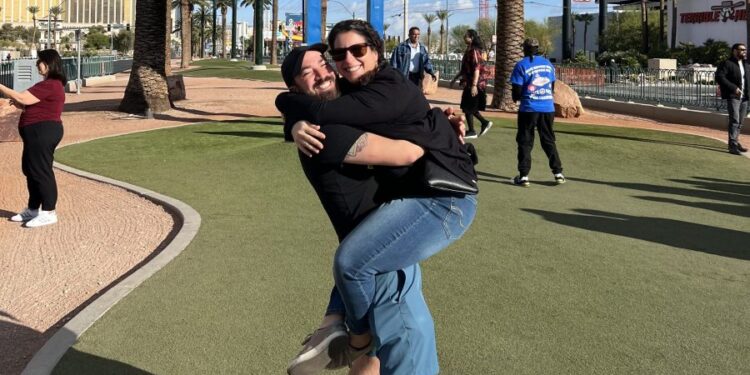AUSTIN (KXAN) – Austin resident Darrell Garza has a passion for making dog leashes. It’s a hobby he picked up 15 years ago — today, the dog leashes he makes are a way to pay tribute to his father.
“My dream is to create leashes and collars for our military canine units,” Garza said. “As a child, I always wanted to be in the military. My dad was in the Air Force, and I remember when I was about four years old, I was like, ‘I want to do that.’“
Garza’s dream of military service was shattered early. When he was six years old, he lost his eyesight.
“I started having retinal detachments, and from six to 19. I had over 30 major surgeries on my eyes and countless minor surgeries that were uncomfortable,” said Garza about his childhood.
At the time, he didn’t know that his loss of vision during childhood would strengthen him for future battles against cancer.
He received a testicular cancer diagnosis on Christmas Eve in 2010, at the age of 24. After successful treatment and surgery, the cancer was gone. Ten years later, during the start of the COVID-19 pandemic, Garza noticed a change.
“I checked and I was like ‘Oh my God, there’s another lump,'” Garza said.
Texas Urology Specialists‘ Dr. Kyle Keyes said that getting cancer twice is rare, but happens 2-3% of the time. He also noted that testicular cancer is easy to detect and rarely subtle.
“Testicular cancer, stereotypically, is painless. You just notice that there’s something growing, and cancer is, stereotypically, rock hard,” Garza said. “Think of it like a rock in your garden, and imagine that in your scrotum.
According to Keyes, most young men don’t have medical insurance, so he encourages them to get it.
“Testicular cancer can grow very quickly. People notice this difference over about one to two weeks. Rarely, I hear people tell me, ‘Hey, I’ve noticed this funky thing growing in there for like, six months or two years,'” Keyes said.
Keyes recommends that people with testicles should check for cancer monthly. Testicular cancer is unique, because it’s a “disease of the young,” affecting people between 15 to 35 years of age, he said.
“That range is very odd, because us men, we develop our germ cell cancers when we’re young. Women develop their germ cell cancers when they’re older, like women get ovarian cancer in their 60s, typically,” Keyes said.
Keyes started working with Garza close to two years ago and said he’s amazed by Garza’s resilience.
“He’s gone through other things in his life that have forced him to be resilient. It’s this concept of suffering produces endurance,” Keyes said. “Endurance produces character. Character produces hope. So many good things can come out of these tough situations in people’s lives. If it doesn’t kill you, it does make you stronger, and Daryl is the epitome of that.”

Garza, now married, said he’s not giving up on his dream of becoming a father. Before he first started testicular cancer treatment, he froze his sperm. He and his wife are now looking at options.
“When I found out I was sterilized because of cancer, that was extremely emotional for me, because I always wanted kids,” Garza said. “Still having my testicle before my second bout of cancer, I still felt okay. But when I lost the second one, it felt like I’m extinct in a sense. That was tough. But, in time things get better.”
Garza is currently building a website to feature his leather leashes for dogs. In the meantime, people can email him at [email protected].
“If my story can help someone find some solace in what they’re about to go through, I’m talking about it,” Garza said.







